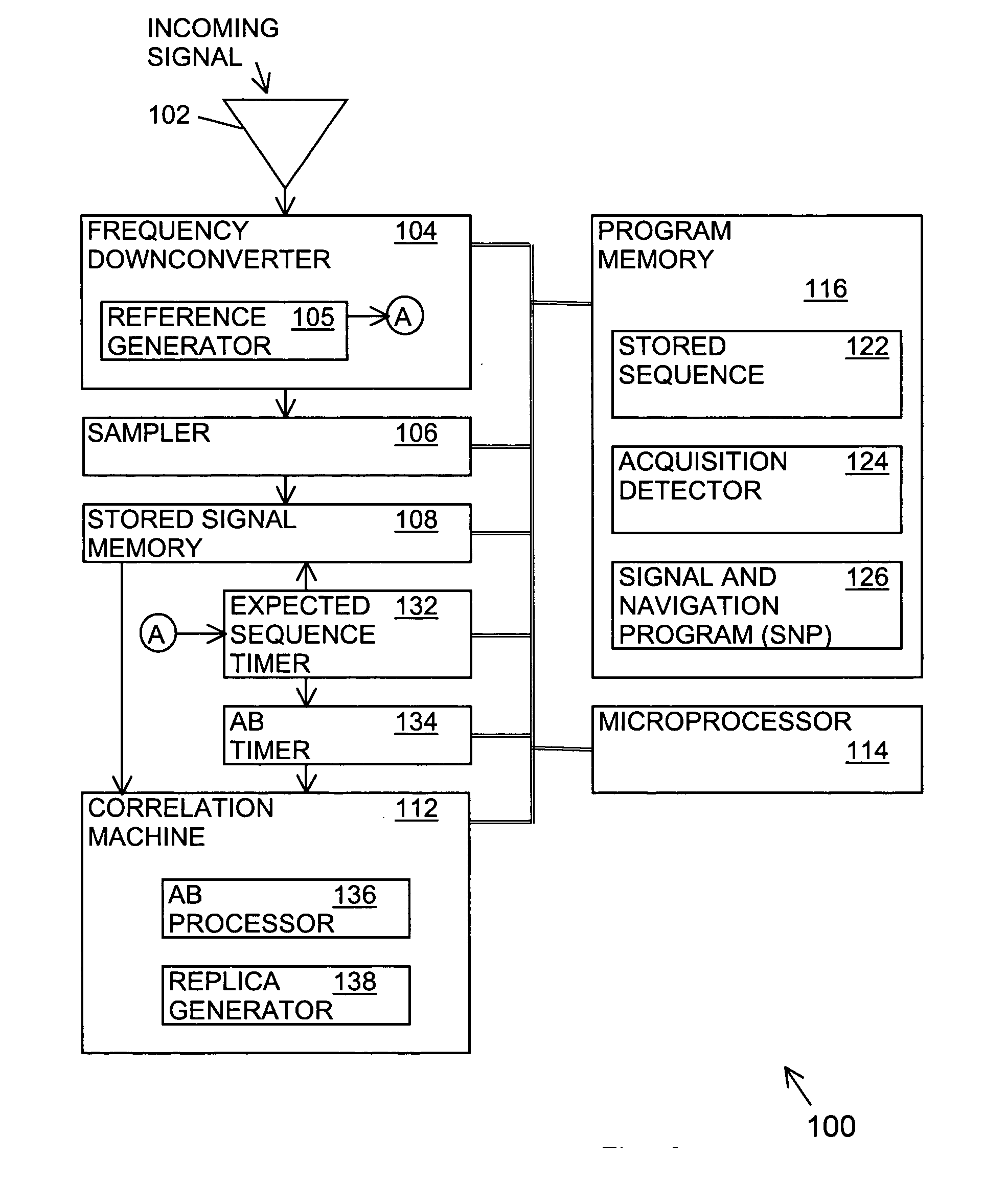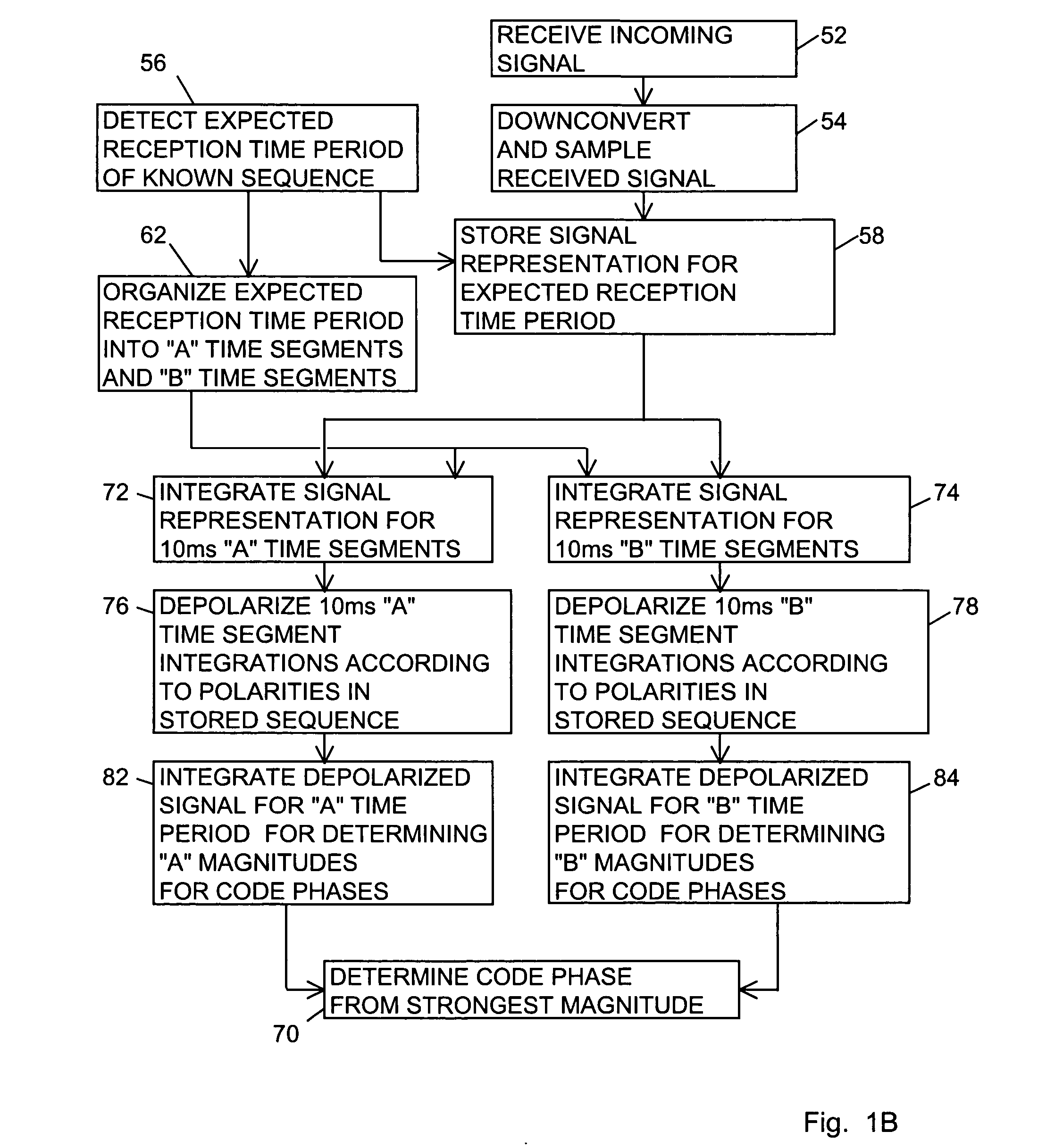Signal receiver having signal acquisition at low signal strength using interleaved time segments
a signal receiver and interleaved time segment technology, applied in the field of signal receivers with low signal strength, can solve the problems of reducing the tolerance for time error, limiting the application range of the global positioning system, and difficult to use the gps indoors, so as to improve the probability of rapid acquisition of weak signals, increase the tolerance for time errors, and increase the signal processing gain
- Summary
- Abstract
- Description
- Claims
- Application Information
AI Technical Summary
Benefits of technology
Problems solved by technology
Method used
Image
Examples
first embodiment
[0082] In a first embodiment shown in FIG. 7A, a block 702 depolarizes a representation of the incoming signal for the known polarities of the expected GPS data bits for providing a depolarized signal. A block 704 integrates the depolarized signal for time lengths not greater than the time segments for providing depolarized integrations. A block 706 separates the “A” time segments and the “B” time segments for the depolarized integrated signal for providing “A” and “B” depolarized integrations, respectively. Then, a block 708 further integrates (accumulates) the “A” depolarized integrations over the entire “A” time period for providing the “A” time period magnitudes and further integrates (accumulates) the “B” depolarized integrations over the entire “B” time period for providing the “B” time period magnitudes.
second embodiment
[0083] In a second embodiment shown in FIG. 7B, a block 710 depolarizes a representation of the incoming signal for the known polarities of the expected GPS data bits for providing a depolarized signal. A block 712 separates the “A” time segments and the “B” time segments for the depolarized signal for providing an “A” depolarized signal and a “B” depolarized signal, respectively. Then, a block 714 integrates the “A” depolarized signal over entire “A” time period for providing the “A” time period magnitudes and integrates the “B” depolarized signal over the entire “B” time period for providing the “B” time period magnitudes.
third embodiment
[0084] In a third embodiment shown in FIG. 7C, a block 720 integrates a representation of the incoming signal for time lengths not greater than the time segments for providing first integrations of the signal. A block 722 depolarizes the first integrations for the known polarities of the expected GPS data bits for providing depolarized integrations. A block 724 separates the depolarized integrations according to the “A” and “B” time segments for providing “A” and “B” depolarized integrations, respectively. Then, a block 726 further integrates the “A” depolarized integrations over the entire “A” time period for providing the “A” time period magnitudes and further integrates the “B” depolarized integrations over the entire “B” time period for providing the “B” time period magnitudes.
PUM
 Login to View More
Login to View More Abstract
Description
Claims
Application Information
 Login to View More
Login to View More - R&D
- Intellectual Property
- Life Sciences
- Materials
- Tech Scout
- Unparalleled Data Quality
- Higher Quality Content
- 60% Fewer Hallucinations
Browse by: Latest US Patents, China's latest patents, Technical Efficacy Thesaurus, Application Domain, Technology Topic, Popular Technical Reports.
© 2025 PatSnap. All rights reserved.Legal|Privacy policy|Modern Slavery Act Transparency Statement|Sitemap|About US| Contact US: help@patsnap.com



